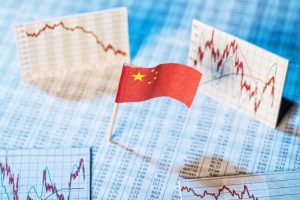China’s contract manufacturing space is growing at over 15% year-on-year but only WuXi Biologics has seen success in attracting global clients, says BioPlan Associates ahead of CPhI Discover.
Third-party drug manufacturing is relatively new in China. Only since 2015 has a market authorization holder (MAH) system been in place, opening the doors through further reforms for commercial contract development and manufacturing organizations (CDMOs) to operate in the country.
In 2019, China approved Hodgkin’s lymphoma drug tislelizumab – the first CDMO-made monoclonal antibody (mAb) in the country, developed by BeiGene but made locally by Boehringer Ingelheim.

Image: iStock/gopixa
Since them, the floodgates have opened, says Vicky Xia, China Head at BioPlan Associates. “There have been around a dozen new mAb therapeutics from domestic innovators in the last two years, and we can expect these approvals levels to double over the next five years with the wave of BLAs coming through,” she said ahead of CPhI Discover, a virtual pharma gathering being held between the 17th and 28th May, where she will be presenting on this subject.
For the burgeoning CDMO space, this represents a major opportunity with the sector set to grow at a CAGR of over 15%, she said, as more products move in and through the clinic.
And according to Xia, the infancy of the Chinese CDMO market makes it ripe for implementing newer technologies and innovation.
“This is one of the strengths of China, that all new sites are built with new equipment rather than repurposing legacy sites,” she said. “There is also a high preference for single-use technology at CDMOs in China, and we also see several CDMOs exploring continuous bioprocessing to increase manufacturing efficiency.”
WuXi Biologics and Transcenta have both invested in continuous bioprocessing platforms, for example.
In China and beyond
The handful of western CDMOs that have set up in China are successfully attracting local business. Boehringer Ingelheim’s successful partnership with BeiGene has led to the Germany-headquartered firm adding several other domestic biotech clients, while Swiss CDMO Lonza has recently opened up its first China-based facility in Guangzhou, naming a contract with Junshi Biosciences as a “major milestone” in supporting Chinese biopharma clients.
However, unlike these multinationals, domestic CDMOs are unlikely to become global players, argued Xia, despite an interest in exploring overseas.
“WuXi Biologics has been an exception to this rule – it has overseas facilities in Ireland [and Singapore, mainland Europe, and the US] and has been quite successful in attracting global clients. Similarly, Pharmaron bought a facility in Europe recently [from AbbVie] with the goal of growing their international business. So overall, the perception amongst China-based CDMOs is that if they want to grow with big pharma clients in the USA and Europe, they need some local manufacturing in these markets.”
She added that while local CDMOs often have discovery services they don’t yet attract large global clients to feed business in – which is another advantage for first movers like WuXi. Thus while numerous CDMOs have sprung up in China over the past few years, only a few players will ever go global, said Xia.
As such, consolidation in the space is likely.
“The biggest CDMOs will pick up the majority of the growth in contract services and ultimately China probably has scope for maybe six or seven large biologics CDMOs – but already there are dozens of contract operators and probably this means consolidation and the majority of growth in the top 10.
“My view is that if these bigger CDMOs can continue to expand capacity the opportunities look very good, as they have the track record, reptation and experience.”
